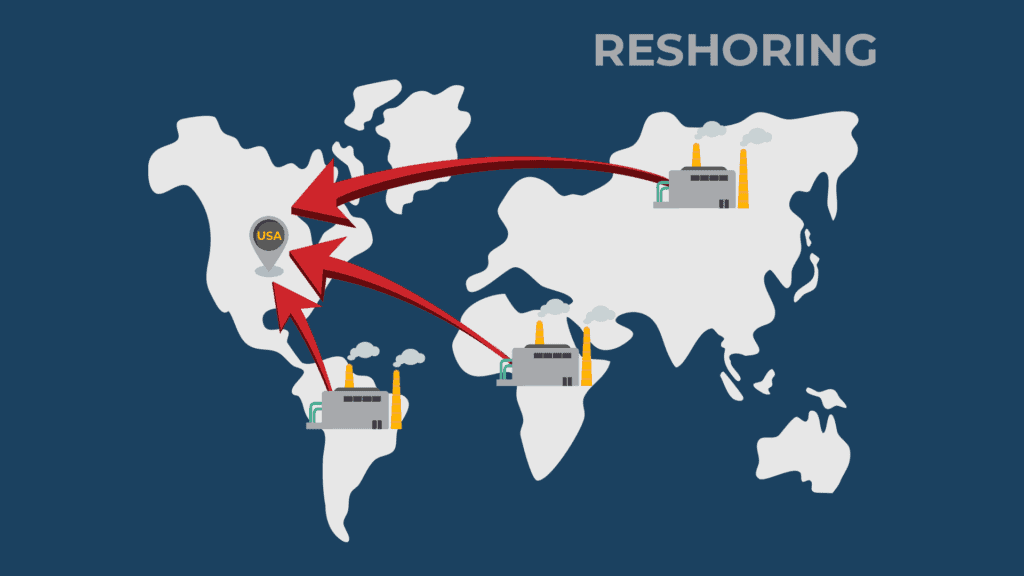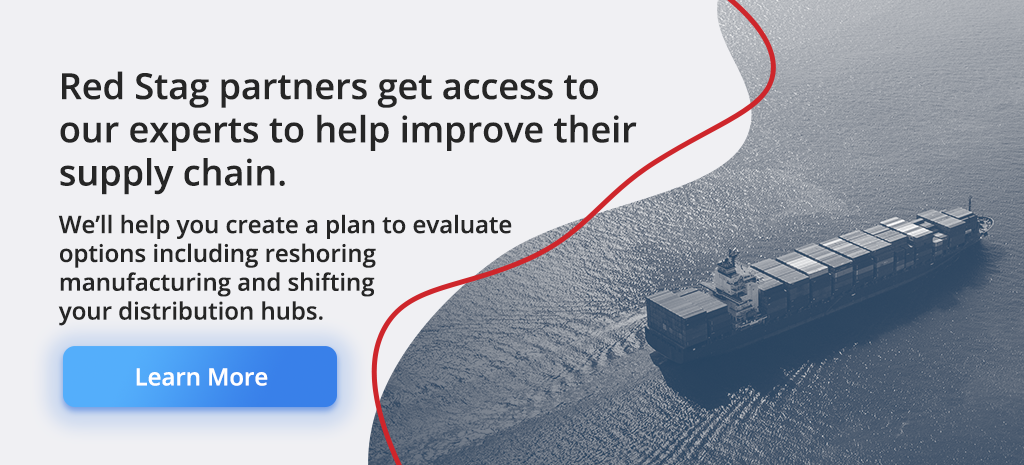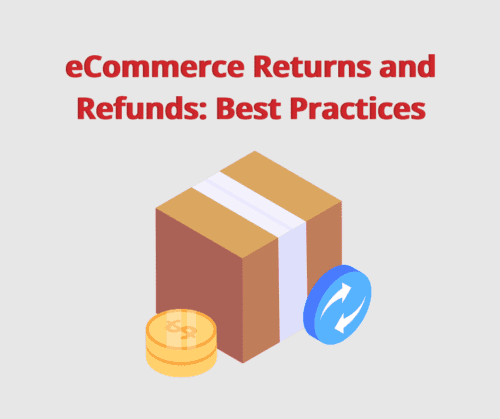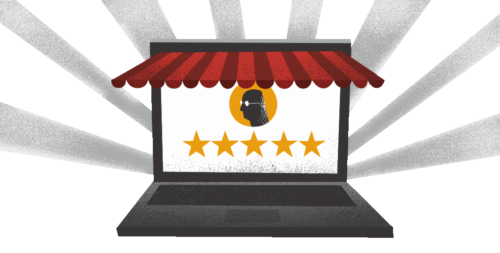The more links you have in your supply chain, the more opportunities for disruptions and interruptions, making it a natural impulse to shorten the chain. Reshoring has once again cropped up as a potential method for companies to address both historically high freight prices and the ongoing instability of fragile, long chains. The chaos of the market makes simplification a tempting option, but it doesn’t necessarily make it realistic.

ECommerce companies need to take a realistic look at the promises and complications of reshoring. This tactic requires rebuilding an entire production paradigm, with the potential to break your supply chain ahead of important Q4 planning. It’s also a long-term effort that may not be necessary to reassert control if you instead invest in more reliable partnerships.
In 30 seconds or less:
When looking at reshoring as a way to control chaos, we recommend you consider the long-term costs and operational headaches of any supply chain overhaul. Pursuing reliable partnerships for last-mile fulfillment can often address your concerns, secure immediate inventory, and give you the runway to thoroughly research and test any production changes. Here are the highlights to help you think about this issue:
- Reshoring is not an immediate cure-all for supply chain concerns.
- Reshoring takes significant time and capital investment without guaranteed returns.
- Many eCommerce companies are better served by building up inventory in the short term.
- A relationship with a 3PL helps companies position that inventory best, especially ahead of the Q4 sales season.
Why is reshoring being hyped right now?
Companies typically discuss reshoring and nearshoring when global supply chains experience pricing or performance pressures. These often come in the form of rising wages and production costs in international manufacturing hubs or significant regional disruption. Causes are often country-specific or geopolitical, making it easy to frame the idea of moving away from impacted areas as a solution.
That’s true right now. Supply chains are in a state of turmoil at home and abroad. Pandemic-related slowdowns have created bottlenecks in both production and inbound freight. High fuel prices inflate the cost of most shipment methods — so the farther a product moves, the higher the total cost of ownership. Companies want to pursue reliability and security, allowing reshoring to re-enter the discussion.
Bringing production home is promised to be a way to mitigate risk while not experiencing a significant cost increase. But that’s not the whole story because the conversations we see in the news tend to overlook the costs of reshoring and the fact that it can take years for complex operations.
What are the risks of reshoring?
The problem of reshoring comes from the disparity between promise and practical reality. On paper, it’s a quick, proactive step to secure greater reliability. In reality, switching tier 2 and tier 3 suppliers requires months to years depending on the final product, required raw materials, facilities to produce your goods, and QA procedures to ensure the new production quality meets customer (and your) expectations.
The timeline means you may be considering reshoring as a way to tackle an immediate threat that could clear up when your reorganization finishes. For example, West Coast congestion for ships waiting to berth is easing, meaning you could instead import at higher volumes to get started on Q4 planning and get ahead of bullwhip threats. Identifying such opportunities can be tricky, which is one reason Red Stag makes our supply chain experts available to all partners.
Beyond time, reshoring can incur higher costs. Reshoring requires substantial investment in creating new supplier relationships, testing goods, and investing in related facilities and partnerships. Each shift introduces the potential for needing new carrier partners or products, which also must be evaluated to ensure goods arrive safely from the point of manufacturing to your distribution partner.
You’ll need to pull capital out of inventory, which can directly threaten top-line revenue as you order and stage goods.
These changes all introduce new potential points of failure. With supply chains having pursued globalization for decades, companies would also be working against trends and existing connections based on a potential that may not materialize. “The idea that reshoring unambiguously improves the resilience of supply chains, for example, is not supported by academic research,” writes Sébastien Miroudot in the Journal of International Business Policy.
What can businesses do instead to prepare for Q4?
ECommerce brands are eyeing supply chain changes primarily to help them prepare for Q4 sales. Instead of pursuing alternative supply lines that may not materialize in time, consider investing in the inventory and distribution network you need for last-mile success. Or, as McKinsey put it recently, remember that “it’s quicker to build inventories than factories.”
Instead of reworking your entire supply chain, the security you’re looking for could come from increased available inventory staged closer to your end customers. Companies starting these efforts today still have time to secure flexible, competitive partnerships with 3PLs like Red Stag Fulfillment to address threats.
Our mission is to eliminate the operational headaches you face by providing industry-leading inventorying, picking, packing, and fulfilling of your orders in the country where your customers live. We back these efforts with proven guarantees so that you can focus on what you do best — producing quality products in the locations where it makes sense to optimize product value and customer satisfaction.
While that requires a robust fulfillment partnership, it’s a much easier and faster effort than reshoring production. Now is the time to build up that network so it is in place and tested ahead of Q4.
Reshoring or regionalizing your supply chain may be an innovative long-term plan, but 2022 success will depend on the goods you can produce and start staging now. Focus on relationships that protect the year-end sales cycle so you have the time and resources to accurately assess, test, and shift supply chains without sacrificing quality or revenue.
The time to start these conversations is now. So click the button below to tell us more about your production and sales, and then get a custom success plan for the rest of this year.












